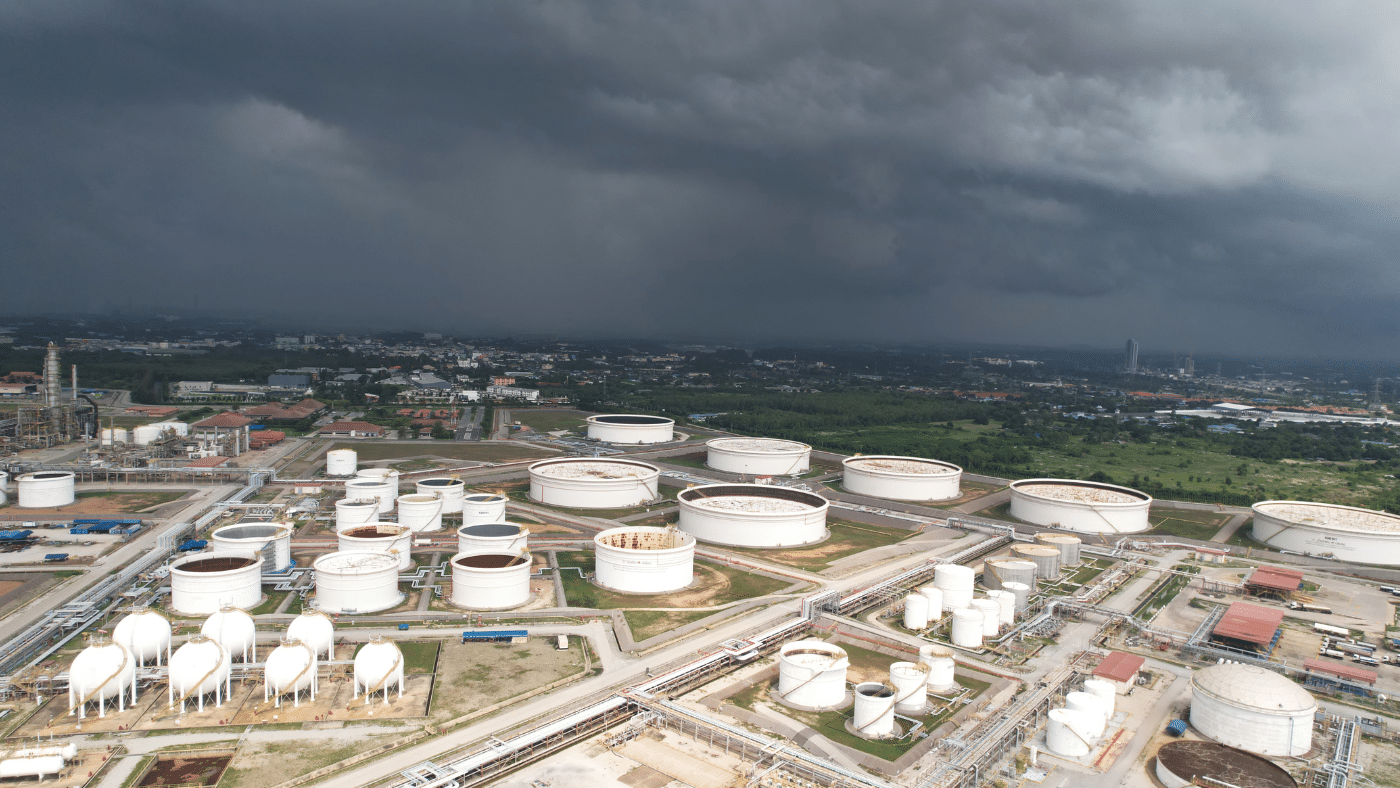Best Practices: Protecting Storage Tanks from Natural Disaster Damage
Natural disasters are often unpredictable and result in costly remediation, disruptions to operations, compliance violations, and risk to health and safety. Underground storage tanks (USTs) and aboveground storage tanks (ASTs) are especially vulnerable to damage during natural disaster events such as flooding, hurricanes and storms.
In this post, we
- explore the specific effects of intense weather on ASTs and USTS
- provide prescriptive measures to address the unique vulnerabilities of ASTs and USTs
ASTs and Lightening Events: A Dangerous Combination
With intense force and destructive capabilities, lightning strikes on an AST can result in fires, explosions, hazardous material leaks and water contamination. Such incidents can be especially catastrophic when storage tanks containing dangerous chemicals are affected. A study sponsored by 16 oil industry companies discovered that lightening was the cause of 52 of 55 rim-seal fires and concluded “lightning is the most common source of ignition.” Overall, it is estimated that one-third of petroleum AST fires result from lightning strikes during storms.
Due to the ignition of flammable vapors located near or inside ASTs, lightning strikes can indirectly be harmful as well. Due to the substantial heat input and high current densities, explosions and rim-seal fires may occur, which can cause melting and erosion of the AST structure.
Direct lightning strikes or secondary effects such as the bound charge, electromagnetic pulse, electrostatic pulse and earth currents can all cause lightning-related fires. Leaks of flammable liquid from the seal, direct strikes, rim seal leaks and ineffective grounding are the most frequent causes of these fires.
Hurricanes, Storm Surges and Flooding Events Put ASTs and USTs at Risk
ASTs are generally constructed from welded steel plates forming a thin-walled cylinder that makes them very slender structures. The geometric thinness makes them lightweight and economical, however; it also makes them susceptible to buckling. Buckling occurs when the external loads acting on an AST cause it to move from a stable state to an unstable state, resulting in deformations of the tank shell. Investigations of AST failures during hurricane-induced storm surges or flooding have indicated that buckling can occur due to excessive wind pressure or excessive water pressure. Storm surge buckling is concerning for ASTs anchored to the ground where they are subjected to high water levels. Unanchored tanks will typically float away before buckling occurs.
Damaged ASTs have released hazardous chemicals during almost every hurricane in the United States since 1991. During Hurricanes Katrina and Rita, over 26 million liters of oil and chemicals were released into the environmental due to AST failures. During Hurricane Harvey, damage to ASTs released approximately 2 million liters of petroleum products.
When flooded, the integrity of UST systems is severely compromised. During Hurricane Harvey, approximately 15.4 million gallons of fuel/hazardous substances from 1,200 USTs were released.
USTs are also vulnerable due to their characteristics and conditions in the subsurface. USTs can be affected by the following:
Buoyancy – Underground storage tanks contain both fuel and air within a closed system. This becomes problematic when the space surrounding the tank fills with water due to heavy rain, a hurricane or river overflowing its banks. The air in a UST makes the tank buoyant, pushing up against the ground to rise above the water. Unanchored USTs can pop out of the ground causing the connecting pipes to detach or rupture resulting in a release. Additionally, USTs may shift underground, creating cracks in the tank or the piping that can cause a release once operations resume.
Erosion and Scour – Water travelling rapidly can result in
- soil erosion: the soil above or around the UST is carried away by wind or floodwaters
- scouring: the velocity of flowing water removes (or scours) the soil cover and supporting backfill material around the UST system
A UST exposed due to erosion and scouring is susceptible to weakening or collapsing. Additionally, the conditions create a situation that may allow the UST piping to separate from the UST.
Product Displacement – Water or other debris can enter a UST through openings such as fill pipes, vent pipes, gaskets, loose fittings, covers, sumps and damaged tank walls. As water or debris settles on the bottom of the UST, the product will rise and float on top until it overflows the container.
Preventing ASTs and USTs Damage Due to Flooding, Hurricanes, or Storms
The Environmental Protection Agency (EPA) predicts that sea level rise will occur along the entire United States coastline over the next thirty years. This rise will result in a shift in coastal flooding where tide and storm surge heights will increase and reach areas further inland. “Major” flooding is expected to occur five times as often in 2050 as it does currently.
In the face of these predictions, it is imperative to take specific steps to safeguard any AST or UST facility located in an area likely to be affected by flooding, hurricanes, or storms. The following practices can help reduce the likelihood of damage caused by these events:
UST Damage Prevention
- Anchor the UST to counterweigh potential buoyancy forces.
- Ensure all caps on tank risers contain gaskets and that fill spouts are sealed tightly to prevent water from entering the UST.
- Cap vent lines to minimize the entry of water and debris. Also, ensure that vent lines are anchored where they extend from the ground surface to reduce damage from high winds.
- Inspect shear valves for proper operation and anchorage.
- Maintain a sufficient product level inside of the UST to reduce the risk of floating displacement.
AST Damage Prevention
- Install lightning protection systems.
- Chose the correct grounding methods.
- Regularly inspect the foundation of the AST for indications of damage or deterioration.
- Anchor ASTs to the foundation to prevent toppling during high winds.
- Reinforce the foundation with concrete pillars to connect to solid ground if necessary.
- Equip the AST with an emergency shutoff to seal openings rapidly. Vents and pipes should have raised openings located above expected flood levels.
For more information on evaluating storage tank facility conditions and protecting storage tanks from weather-related damage, please contact Melissa Epps, or call 888.298.5162 or submit an inquiry.




